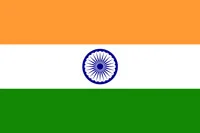Edible Insects Market Size, Share, Trends, Growth, and Industry Analysis, By Insect Type (Crickets, Mealworms, Black Soldier Flies, Buffalo\'s, Grasshoppers, Ants, Silkworms, Cicadas, and Others), Insect Category (Regular Insects, and Premium Diet-Fed Insects), Application (Human Consumption Products, Animal Nutrition, Insect Oil, Pharmaceuticals, Cosmetics, Personal Care, and Others), Distribution Channel (Direct and Indirect), Regional Analysis and Forecast 2033.
STUDY PERIOD: 2019-2032
BASE YEAR: 2023
HISTORICAL DATA: 2019-2022
Global Edible Insects Market size was USD 2.16 billion in 2024 and the market is projected to touch USD 9.95 billion by 2033, at a CAGR of 21.04% during the forecast period.
Edible Insects include crickets, mealworms, grasshoppers, and beetles, which are reared and processed for food. Edible insects have provided an alternative source of protein and necessary nutrients and vitamins, but they have been put at a pinnacle of environmental balance since they take less land, water, and feed than traditional livestock and produce less greenhouse gases.
This edible insects market has attracted wide interest lately due to an increasing concern for a sustainable food source and meeting global challenges of food security. With awareness about nutritional value, customers have become conscious about insect-based products as part of replacement for animal-based products. Insect-based protein powder, snack, and ingredients that are used in food manufacturing are part of this market. While still a niche market in many regions, edible insects are quickly gaining popularity in Europe, North America, and parts of Asia where they are used in various types of culinary products. Given this very fast rise in demand for alternative proteins, the market for edible insects is assumed to grow exponentially as more innovations in product development and consumer acceptance follow on.
Edible Insects Report Scope and Segmentation.
|
Report Attribute |
Details |
|
Estimated Market Value (2024) |
USD 2.16 Billion |
|
Projected Market Value (2033) |
USD 9.95 Billion |
|
Base Year |
2024 |
|
Historical Year |
2018-2024 |
|
Forecast Years |
2024 – 2033 |
|
Scope of the Report |
Historical and Forecast Trends, Industry Drivers and Constraints, Historical and Forecast Market Analysis by Segment- Based on By Insect Type, By Insect Category, By Application, By Distribution Channel, & Region. |
|
Segments Covered |
By Insect Type, By Insect Category, By Application, By Distribution Channel & By Region. |
|
Forecast Units |
Value (USD Million or Billion), and Volume (Units) |
|
Quantitative Units |
Revenue in USD million/billion and CAGR from 2024 to 2033. |
|
Regions Covered |
North America, Europe, Asia Pacific, Latin America, and Middle East & Africa. |
|
Countries Covered |
U.S., Canada, Mexico, U.K., Germany, France, Italy, Spain, China, India, Japan, South Korea, Brazil, Argentina, GCC Countries, and South Africa, among others. |
|
Report Coverage |
Market growth drivers, restraints, opportunities, Porter’s five forces analysis, PEST analysis, value chain analysis, regulatory landscape, market attractiveness analysis by segments and region, company market share analysis. |
|
Delivery Format |
Delivered as an attached PDF and Excel through email, according to the purchase option. |
Dynamic Insights
Growing demand for sustainable protein sources is the most important driver. Edible insects offer a viable alternative in light of growing population, resource constraints, and environmental concerns that render traditional methods of raising animals less sustainable. They require less land, water, and feed than conventional livestock in comparison. Additionally, insects are highly nutritious and contribute to a rich source of protein, fiber, vitamins, and minerals, which corresponds to the increasing consumer interest in healthy, functional foods.
On the other hand, there are barriers in the market. Acceptance in consumption is one of the biggest challenges in the market, especially in the Western market because it creates resistance in the minds psychologically due to cultural factors. Educational and awareness campaigns are essential strategies to break down such barriers to change perception. Generally, regulatory frameworks over production and consumption of edible insects are weak in most regions. Insect farming is not cheap, with such cultured facilities and appropriate technologies accounting for limitations in bulk production. Innovations pertaining to insect-based food products continue to be significant drivers of market expansion, with greater recognition for their contribution to the environment and nutritional value. Advances in plant-based diets and alternative protein sources, in addition to burgeoning demand for sustainable food options, position the edible insects market to grow over the long run.
Drivers Insights
- Sustainability and Environmental Benefits
Some of the main factors driving this global demand for edible insects are sustainable food sources and an increase in environmental issues related to livestock farming. This traditional livestock rearing method uses large proportions of water, land, and feeds and thus remains unsustainable due to the environmental issues involved. Edible insects have a much smaller ecological footprint compared to traditional farming. They consume fewer resources and produce less greenhouse gas emission. For example, crickets require about 12 times less feed than cattle to produce the same amount of protein. That is why edible insects are considered to be such an attractive alternative for encompassing food security and climate change concerns, especially in resource-restricted areas. Also, as consumers and industries grow to become more eco-conscious, so does the demand for environment-friendly protein sources.
- Nutritional Value and Health Benefits
Increased knowledge of the healthy diets supported by edible insects is another significant driving factor. Insects are characterized by rich high-quality protein, essential amino acids, fiber, vitamins, and minerals that are a good source of iron, calcium, and B-vitamins. In a quest for healthier and more sustainable diets amid the worldwide population increases, edible insects have been identified as a valuable nutritional outlet, especially in developing countries with prevalent malnutrition. This is a protein solution against deficiency and is increasingly integrated into various food products, protein powders, snacks, and bars. The health-conscious consumer, particularly in developed markets, is more likely to opt for alternatives outside traditional sources of protein due to this and drives the market.
Restraints Insights
- Cultural Acceptance and Consumer Resistance
Cultural resistance is one of the biggest challenges to the edible insects market, especially in developed economies. A lot of consumers still harbor deep-seated cultural aversions against the consumption of insects and view them as repulsive or "unnatural." This is partly because insects have been an integral part of the food chain of many parts of the world, especially in Asia, Africa, and Latin America, and are considered novelties or taboos only in regions such as Europe and North America. Consequently, quite a lot of effort must be directed to education for consumers, effective marketing, and product development. Companies need to produce attractive and edible insect-based products that will encourage the changing attitude toward insect consumption.
- Regulatory Challenges
The regulatory landscape for edible insects remains unclear and is inconsistent across different countries. In several regions, edible insects are classified as novel foods and require extensive approvals before they can be marketed. A lack of standard regulations in terms of food safety, farming practices, and labeling creates uncertainty for producers and manufacturers. These things make regulation complex and thereby can be a growth hindrance to the market through protracted product launches, cost escalation, and restraint on market access. A more transparent and harmonious regulatory framework is thus required for increased consumer confidence and expansion of the market.
Opportunities Insights
- Product Innovation and Diversification
The edible insects market is a ready opportunity for innovations and diversification of products. From the increase in interest among consumers in alternative proteins, manufacturers now have various alternatives in using edible insects in everyday food items. Insects can be made into protein powders, snacks, energy bars, and even functional beverages, thereby giving many opportunities for new product development. However, insect protein can also be formulated as a raw material in plant-based foods, thus meeting the diets of flexitarian and vegan diets. The enormous number of products that can be made from insects that taste can range from the savory snacks and sweets to even pet food offers big opportunities for growth and market penetration.
Segment Analysis
- By Insect Type
There are multiple species of insects in the edible insects market, which are used to produce various types of farmed and processed insects for consumption. Crickets are among the most frequently used insects because they have high protein content and can be farmed under very sustainable conditions. As such, other well used insect types include mealworms, rich in essential fatty acids and proteins, and often found in snack and protein bars. The Black Soldier Flies find more use in animal feed that is high in nutrition and easy to farm. Despite lesser availability, buffaloes are used in niche market niches for their profile. Grasshopper is one of the most significant insect types because it is mild in flavor along with high protein content. Ants are not as popular as ants, though the specialty food mostly depends on it in certain cuisines. Silkworms are rich in protein and fat that make them fit both human consumption and as animal feed. Cicadas are seasonal but are cherished for a particular delicacy in some regions.
- By Insect Category
The category is divided between by insects and regular, premium diet-fed insects. Regular insects include those farmed on standard conditions, mainly fed a standard diet. They are consumed widely across different application areas in human consumption, animal feed, and pharmaceuticals, among others. Premium diet-fed insects, on the other hand, are raised in specialized feed of higher quality, improving their nutritional strength. These insects are often targeted as the basis for premium human consumption products or high-end pet foods where quality is paramount. In line with the ever-increasing awareness of food sourcing and quality, premium diet-fed insects are gaining popularity within markets demanding higher standards of nutrition and sustainability. Both product lines address the demand of a disparate market: mass-produced bug brood by the commonly available and inexpensive regular insects, and premium diet-fed insects for health-conscious consumers as well as in niche markets.
- By Application
The by application segment of the edible insects market depicts how several uses fall under it; the largest, human consumption, incorporates processing of insects into protein powders, snacks, and functional foods. The insect-based food has nutritional benefits in its protein, fiber, and micronutrient content, making them attractive for consumers looking for sustainable, healthy food alternatives. Another important area of using insect protein is in animal nutrition in the form of animal feed for pets, livestock, and aquaculture. Insect oil extracted from different insect species is used in cosmetics and personal care because it has moisturizing and nourishing properties. Another interesting use is the production of certain pharmaceuticals, where some compounds in insects have medical benefits. These insect-based products are increasingly being applied in personal care products like shampoos and soaps because of their natural appeal and eco-friendliness.
- By Distribution Channel
The by distribution channel segment deals with the method edible insect products reach the consumer, and that is divided into two channels: direct and indirect. A direct distribution channel comprises selling insect-based products directly to the consumers, either online or at local stores or directly delivered to the consumer. The hold on the product pricing, marketing, and consumer relationship is much more with this channel. Indirect sales involve selling through intermediaries such as wholesalers, retailers, and distributors. This brings edible insect products to greater markets and other regions, as well as opens up possibilities for brands to piggyback on established distribution networks. Direct and indirect channels are equally vital for the market growth of edible insects, though direct channels can provide more personalization compared with the indirect channels, which scale up availability and penetration of the products within the market.
Regional Analysis
Asia Pacific, with countries such as Thailand, China, and Vietnam, is also the first traditional source of edible insects, for which they constitute an even larger market in terms of human consumption and animal feed. Within this Asian region, many consume crickets, mealworms, and grasshoppers, and demand is rising due to sustainability in the insect farm. As a result, not only local farming traditions but also rising interest in alternative proteins has supported the trend of insect-based food products in Southeast Asia.
In Europe and North America, markets for edible insects are under development but gaining momentum as people grow in interest for sustainable and alternative sources of protein. Consumers being brought up on healthy eating habits and the trend of awareness campaigns have enabled the growth of insect-based food products in this region. Drivers in the European market are the UK, the Netherlands, and Germany. The market is nudged by an increasing vegan and flexitarian population in these countries. In North America, the US and Canada are witnessing this trend towards insect-based protein in snacks, protein powders, and energy bars but cultural resistance is high. Most importantly, regulatory acceptance in North America and the European Union regarding insect-based products are making headway, which should support further growth in the market.
The edible insects market in Latin America and Africa is driven by tradition and as a substitute for protein sources for those facing food insecurity. For instance, crickets, mealworms, and termites are 'local cuisines' in many parts of Mexico, Brazil, and Sub-Saharan Africa; therefore offering a sustainable solution to malnutrition in the regions. This market should gain ground in such regions because the knowledge of nutritional and environmental benefits of edible insects is widely spreading across the globe.
Competitive Landscape
Most of the key companies are innovating, developing products, and focusing on sustainability to differentiate in an increasingly growing market. These include Aspire Food Group, Entomo Farms, Insectifii, Ynsect, and Protix, specialized in insect-based product farming, processing, and commercialization. These companies invest in a growing demand for sustainable sources of protein, which also are nutrient-rich, by producing products for human consumption, feed, and even pharma. For example, Aspire Food Group is most known for cricket-based protein powder and snacks, while Ynsect focuses on insect protein for human and animal nutrition as one of the leaders in industrial-scale insect farming.
In addition to these established players, a spate of start-ups is innovating in the space. Companies like Exo Protein are developing insect-based snack products aimed at the healthy and environmentally conscious consumer, especially in Western markets. Start-ups often depend on direct-to-consumer models, offering insect protein in snack bars, powders, and ready-to-eat meals. The regulatory environment will also define the competitive landscape, as companies have to operate under different food safety standards across regions. Companies which adapt quickly to changes in regulatory levels, invest in research and development, and scale their production processes will get an edge over others.
Demand for edible insect products is expected to increase as well as to create highly competitive markets, exerting pressures on sustainability, quality control, and consumer education. Further expansion in availability and acceptance of insect-based products worldwide is expected to be driven by collaboration between producers and food manufacturers in offering their respective insect-based ingredients. Advancement in insect farming technology and innovation in formulations of insect-based ingredients will fuel competition and further drive market growth.
List of Key Players:
- BETA HATCH
- Aspire Food Group
- Entomo Farms
- Ynsect
- Insecteo
- Xiamen Water Life Imp. & Exp. Co. Ltd
- Fluker's Cricket Farm
- Enviroflight
- Kreca Ento-Feed BV
- Symton Black Soldier Fly
- Chapul LLC
- Armstrong Crickets Georgia
- Jimini's
- Invertapro AS
Recent Developments:
- In December 2023, Entobel launched a new insect meal production plant in Vietnam, capable of producing 10,000 metric tons of H-meal annually. Meanwhile, in October 2023, Protix B.V. from the Netherlands entered into a partnership with Tyson Foods, Inc. from the U.S. to enhance the production of more sustainable protein.
Global Edible Insects Report Segmentation:
|
ATTRIBUTE |
DETAILS |
|
By Insect Type |
|
|
By Insect Category |
|
|
By Application |
|
|
By Distribution Channel |
|
|
By Geography |
|
|
Customization Scope |
|
|
Pricing |
|
Objectives of the Study
The objectives of the study are summarized in 5 stages. They are as mentioned below:
- Global Edible Insects size and forecast: To identify and estimate the market size for global Edible Insects market segmented By Insect Type, By Insect Category, By Application, By Distribution Channel, and by region. Also, to understand the consumption/ demand created by consumers between 2024 and 2033.
- Market Landscape and Trends: To identify and infer the drivers, restraints, opportunities, and challenges for global Edible Insects
- Market Influencing Factors: To find out the factors which are affecting the market of global Edible Insects among consumers.
- Company Profiling: To provide a detailed insight into the major companies operating in the market. The profiling will include the financial health of the company's past 2-3 years with segmental and regional revenue breakup, product offering, recent developments, SWOT analysis, and key strategies.
Frequently Asked Questions
Request For Table of Content
Research Methodology
Multi-report Purchase Plan
A Customized Plan Will be Created Based on the number of reports you wish to purchase
InquireRelated Reports
Client Testimonials
“We value your excellent customer service, promptness in responding, flexibility in customizing reports, and pleasant manner in general. ”
June S. Lee - SBIC/SBP&T Co.,Ltd
“The study and the services provided by Econ Research have more than met my expectations. The study has good depth and breadth and was reasonably priced. Instant responses to my questions delighted me, and the project went off without a hitch. When I require information about a different industry to help my clients, Econ Research would be the first market research firm I would get in touch with.”
Dan Dybus - AlixPartners


